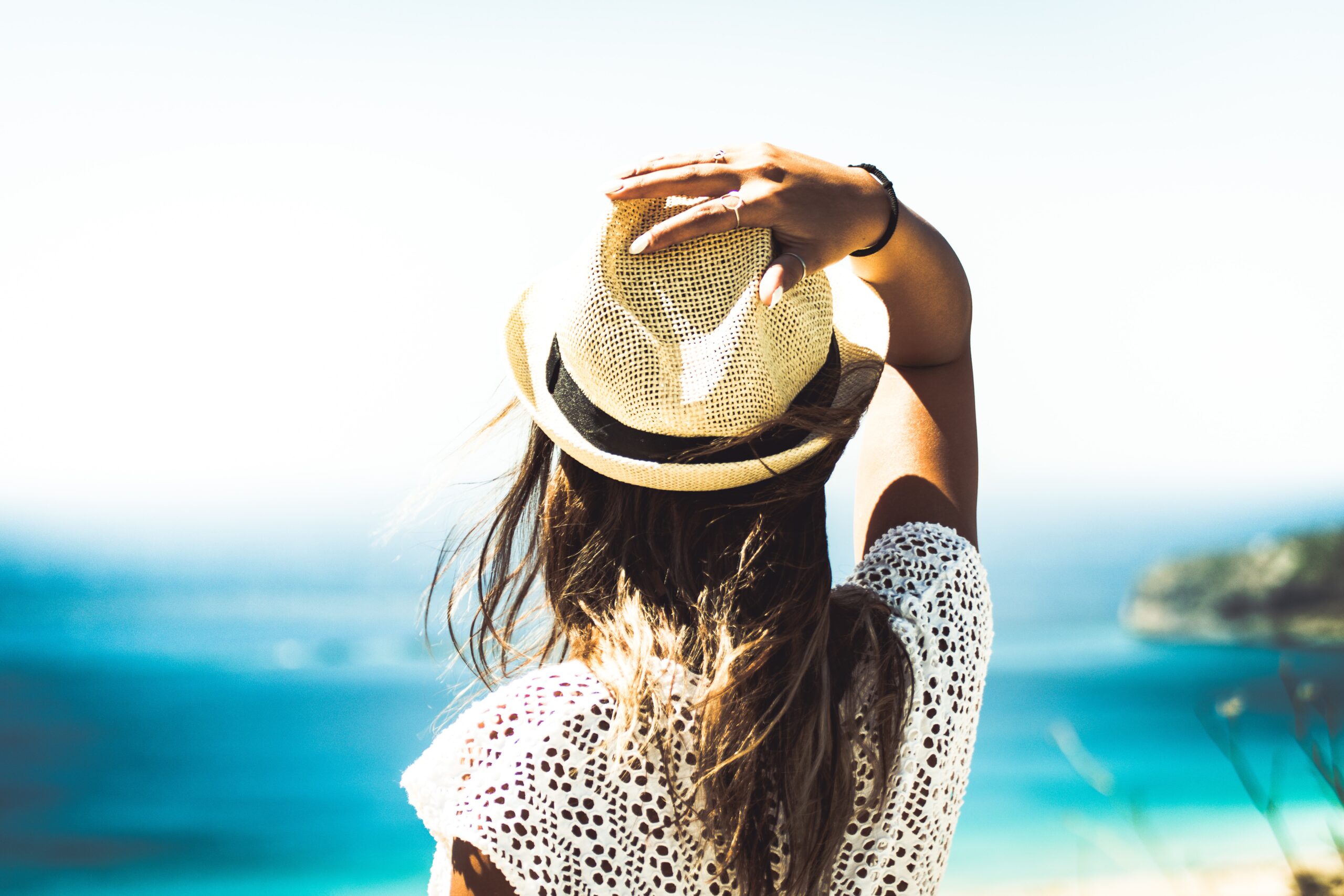4 Ways to Protect From Long-Term Sun Damage While Traveling
Traveling to sun-drenched destinations can be a dream come true, but prolonged exposure to the sun’s rays can lead to long-term skin damage and increase your risk for melanoma and other diseases. To ensure your adventures leave you with cherished memories and not regrettable sunburn, it’s essential to arm yourself with effective strategies for sun protection.
When it comes to long-term travel, preparation and forethought go a long way to making the trip a success. In a previous article, we compiled an extensive list of things you should arrange for an extended trip, including money matters, legal considerations, healthcare, and more. Today, we’ll list some tips for shielding your skin from the sun’s harmful effects while you take your time exploring the world.
4 ways to protect from long-term sun damage
1. Avoid peak UV hours
There are three main types of ultraviolet (UV) rays that reach the earth’s surface: UVA, UVB, and UVC, with the most damaging being UVA and UVB. About 95% of the UV rays that reach the ground are UVA rays, while the other 5% are UVB. The longer wavelength of UVA rays penetrates the skin more deeply, causing genetic damage to cells on the innermost part of your top layer of skin, resulting in photoaging. But, UVB rays have higher energy levels that lead to sunburn, which in turn can significantly increase the lifetime risk of developing skin cancer. As such, it’s best to avoid, or at least limit, outdoor activities between 10 am and 4 pm because almost half the daytime total of the more harmful UVB radiation is received during these hours. Keep this in mind, especially if you’re going to be traveling in sunnier regions like Southeast Asia for a longer period.
2. Wear sunglasses and protective clothing
If going outside during times when the sun’s rays are strongest is unavoidable, take proper precautions. Wear protective clothing like tightly woven, loose-fitting clothes and wide-brimmed hats to shield your ears, face, and neck. It’s also crucial to protect your eyes from sun damage using sunglasses that provide 99% to 100% UVA and UVB defense. For travelers who wear glasses, instead of packing both sunglasses AND prescription glasses, the ability to rely on just one accessory in the form of prescription sunglasses is safer and more convenient for long-term sun protection. Opt for established brands, like Ray-Ban or Oakley, that offer premium quality sun lenses with UV protection that can be customized with your prescription needs.
3. Never go without sunscreen
Make sunscreen a part of your daily habits. Scientific data has shown that sunscreen greatly reduces the risk of developing both melanoma and nonmelanoma skin cancer from UV exposure. This is especially important as in places like Australia, the summer sun can actually be 7-10% stronger compared to similar latitudes in the Northern Hemisphere.
Apply a broad-spectrum sunscreen with a sun protection factor (SPF) of 30 or more on all the exposed parts of your skin. If you’re sweating or swimming, make sure to reapply every two hours. We recommend picking brands that are cheap and accessible so you won’t struggle with replenishing your stock. For this, you can try the CeraVe Hydrating Sheer Sunscreen with SPF 30 for Face and Body or Neutrogena’s Healthy Defense Daily Moisturizer with SPF 50.
4. Double up on sun protection with vitamin C
UV rays are the main culprits of free radicals in the skin, or the unstable oxygen molecules that take energy from healthy cells, causing oxidative stress. This, in turn, activates enzymes that break down collagen and damage cell DNA, causing premature aging. According to board-certified dermatologist Dr. Steven Mandrea, combining vitamin C serum and broad-spectrum sunscreens that safeguard against UVA rays have been shown to be more effective at neutralizing free radical damage from sun exposure than sunscreen on its own. In short, sunscreen layered over vitamin C enhances the protective benefits of both products. If you’re on a budget, start out with the L’Oreal Paris Revitalift Vitamin C Face Serum or the Versed Stroke of Brilliance Brightening Serum, both of which can be found at major drugstores in most countries.
In the long term, UV damage can wreak havoc on your skin and its underlying connective tissue. Consequently, your skin may develop fine lines and wrinkles. Excessive sun exposure also makes you more susceptible to skin cancer, the most common type of cancer in the United States and Australia. Implement the tips above into your daily routine to stay safe from UV rays and make your travels more enjoyable.



